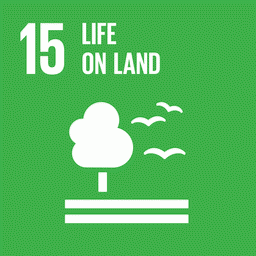By Bibiana Alcântara Garrido*
Datavis: Karina Custódio**
A technical note published by IPAM (Amazon Environmental Research Institute) on Friday, 26, shows that there are 80,180 mining sites in the Brazilian Amazon in a 241,000 ha area – more than twice the size of Belém, next COP30 (World Climate Conference) headquarters city.
Access the study (available for download).
Around 10.5% of this area, or 25,000 hectares, is in 17 directly invaded indigenous lands. According to IPAM’s analysis, another 122 are in mined watersheds, totaling at least 139 territories and their rivers contaminated by the activity.
Even mining located outside the boundaries of indigenous lands is not that far away. Occupying an area of 84,300 hectares, 44% of these mining sites are located within 50 kilometers of the territory’s borders.
“The impact of mining has a much wider reach than the area directly affected by this activity. As a result, pollutants contaminate rivers, soils, fauna and flora, which end up affecting the health of the indigenous peoples,” says Martha Fellows, coordinator of IPAM’s indigenous studies center and author.
16 times more mining
The apex of the invasion of Amazonian indigenous lands by mining took place from 2016 to 2022, the technical note identifies, during the governments of Michel Temer and Jair Bolsonaro. In the meantime, indigenous peoples saw the activity grow by 361% in their territories. The majority (78%) of the area invaded by miners on indigenous lands came about during this period.
!function(){“use strict”;window.addEventListener(“message”,(function(a){if(void 0!==a.data[“datawrapper-height”]){var e=document.querySelectorAll(“iframe”);for(var t in a.data[“datawrapper-height”])for(var r=0;r<e.length;r++)if(e[r].contentWindow===a.source){var i=a.data[“datawrapper-height”][t]+”px”;e[r].style.height=i}}}))}();
The speed with which mining reaches indigenous lands is greater than the advance of the activity in the rest of the Amazon: from 1985 to 2022, the area mined grew 16 times within the territories; and 12 times in the entire biome.
The Kayapó, Munduruku and Yanomami indigenous lands are the most invaded. The Kayapó territory, inhabited by Mebêngôkre peoples and isolated on the banks of the Xingu River in Pará, accounts for 55% of all the area mined on indigenous lands in the region. Together, the three concentrate 90% of the indigenous area invaded by mines.
!function(){“use strict”;window.addEventListener(“message”,(function(a){if(void 0!==a.data[“datawrapper-height”]){var e=document.querySelectorAll(“iframe”);for(var t in a.data[“datawrapper-height”])for(var r=0;r<e.length;r++)if(e[r].contentWindow===a.source){var i=a.data[“datawrapper-height”][t]+”px”;e[r].style.height=i}}}))}();
Within Kayapó lands, illegal mining has grown by 1,339% in 38 years. In the Munduruku territory, also in Pará, the increase was 129 times in the period. And on Yanomami land, in Roraima and Amazonas, mining has increased the area invaded by more than 20,000 times in the same period.
Legal flexibility
According to the technical note, the “unprecedented” increase in the mining area on indigenous lands and the Brazilian Amazon can be explained by the “legal flexibilization in the last legislative cycle”.
An analysis of the history of the regulation of mining activities, developed in the study, reveals different directions adopted by legislation.
“There is a legal dispute over the regulation of mining activities. On the one hand, legal mechanisms that seek to guarantee socio-environmental security; on the other, attempts to loosen and even disrespect fundamental indigenous rights,” adds Fellows.
To guarantee the socio-environmental integrity of areas affected by mining is the Federal Constitution itself, for example; while the “facilities for carrying out this activity”, say the researchers, are shown in the Good Faith Law (Law No. 12.844/2013) and the Garimpeiro Statute (Law No. 11.685 of 2008).
Making mining and indigenist legislation more robust is one of the recommendations of the note, which endorses the follow-up to Bill 3.025/2023, for the implementation of a gold production and marketing tracking system.
The authors stress the need for the immediate disruption of gold mines on indigenous lands, with priority given to those most affected. The creation of a plan to prevent recidivism in the territories is highlighted, with the strengthening of inspection bodies in actions articulated with indigenous bodies, with a view to respecting the peoples and their cultures.
Read the technical note (available for download).
*IPAM science journalist, bibiana.garrido@ipam.org.br
**IPAM journalist
Cover photo: Victor Moriyama


